IIoT Solution for Smart Agriculture: SenseCAP LoRaWAN’s Environmental Monitoring for Sustainable Durian Farming in Malaysia
By Ye Seong SHIN 3 years agoSeeed’s SenseCAP LoRaWAN devices enabled IIoT solution in Malaysia’s durian farming sector, tracking environmental growth conditions of the sensitive tropical fruit. The Project was successful in drastically decreasing the amount of human labor and natural resources, and predicting suitable irrigation patterns and pest control periods. Therefore, this Project directly and indirectly contributes to the UN’s SDGs 9, 12, 8, 2, 13, 16, 6, 7, 11 and 17.
Project Name: Smart Durian Farming Project
Deployment Location: Malaysia
Targeted Industry Type: Agriculture
Project Partner(s): 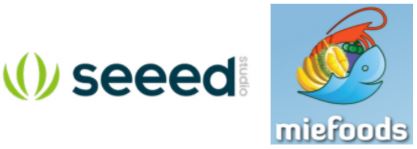
Not as surprising as it may sound, Dr. Ruben Echeverría, the Director General of the International Center for Tropical Agriculture (CIAT), said that climate change is influencing tropical agriculture to a large extent, such as shortening growth periods of crops, less yields, and extreme weather conditions like droughts and deluges. (Foodtank, 2019). This implies that if tropical crops are not sensitively cared for, or managed properly, it could give rise to potential harvest losses. Since the weather conditions became unpredictable more than ever, farmers and food-producing companies in tropical agriculture business are striving hard to find the right partners from Industry 4.0 to adapt to climate change for sustainable agriculture practices. As heralded by the European Commission, IoT solutions will largely shape Industry 4.0 (Figure 1). This makes food production transparent, facilitates maintenance procedure precise and preventative, and optimizes farming practices by rapid data integration and knowledge transfers (European Commission, 2017).
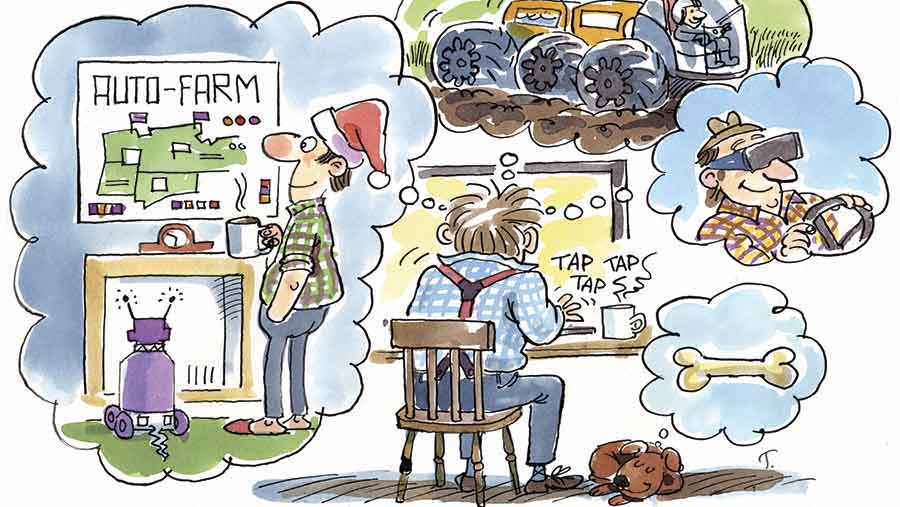
Figure 1. Present Agriculture Being Up-Scaled by the 4th Industrialization
© Jake Tebbit (Yates, 2016)
What’s the Challenge?
How to address manifold issues of durian farming, especially the shortage of manual labor, high sensitivity to environmental conditions, and the lack of standard of procedure (SOP)?
What’s the Project About?
In 2020, agronomists and engineers of MIE Agro Farm Sdn Bhd conducted numbers of research and experiments to solve the multifaceted challenges of durian farming in Malaysia (Figure 2). Soon enough, they found out that Seeed’s SenseCAP LoRaWAN IIoT solution stood out as the best choice, with regards to the connectivity feature among all the other low-power wide-area network (LPWAN) technologies. They recognized the SenseCAP series is most suitable for their smart durian farming scenario.
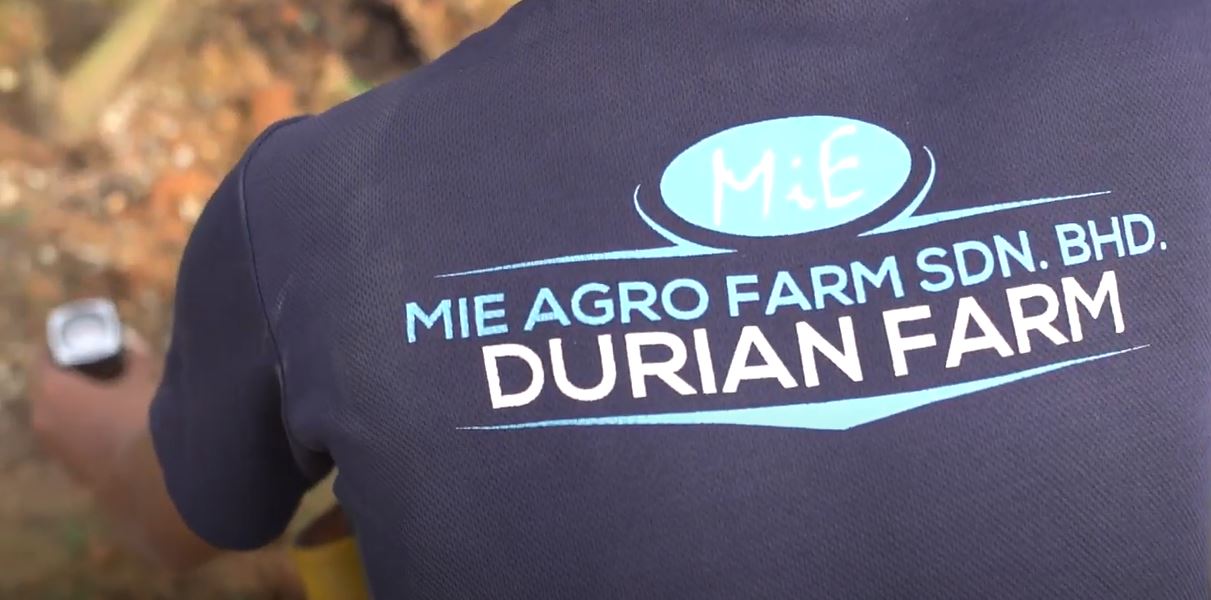
Figure 2. A Worker at the Durian Plantation of MIE Agro Farm Sdn Bhd (A-Farm Agrotech, 2020)
Established in 2017, MIE Agro Farm Sdn Bhd is a wholly-owned subsidiary of MIE Industrial Sdn Bhd, which is the conglomerate’s agriculture and aquaculture business arm. The Agro Farm has a goal to create well-established IIoT solutions for smart agriculture and automatic farm management, through embracing the 4th Industrial Revolution. Ever since its foundation, the Agro Farm has been actively investing in durian farming for its good business potential. As a result, the Agro Farm successfully set up a 200-acre durian plantation in Selangor Fruits Valley, Rawang Town in Selangor State of Malaysia by the end of 2018 (Figure 3). Reportedly, 6,000 durian trees of highly-valued durian varieties were planted, including Musang King, Blackthorn, and IOI. With the commitment of developing a sustainable and ecologically-conscious value-chain of durian business, the Agro Farm aims for continuous learning of the transparent management system, ranging from paying attention to durian samplings and durian growth path to monitoring irrigation patterns, pest control, processing, and exporting.
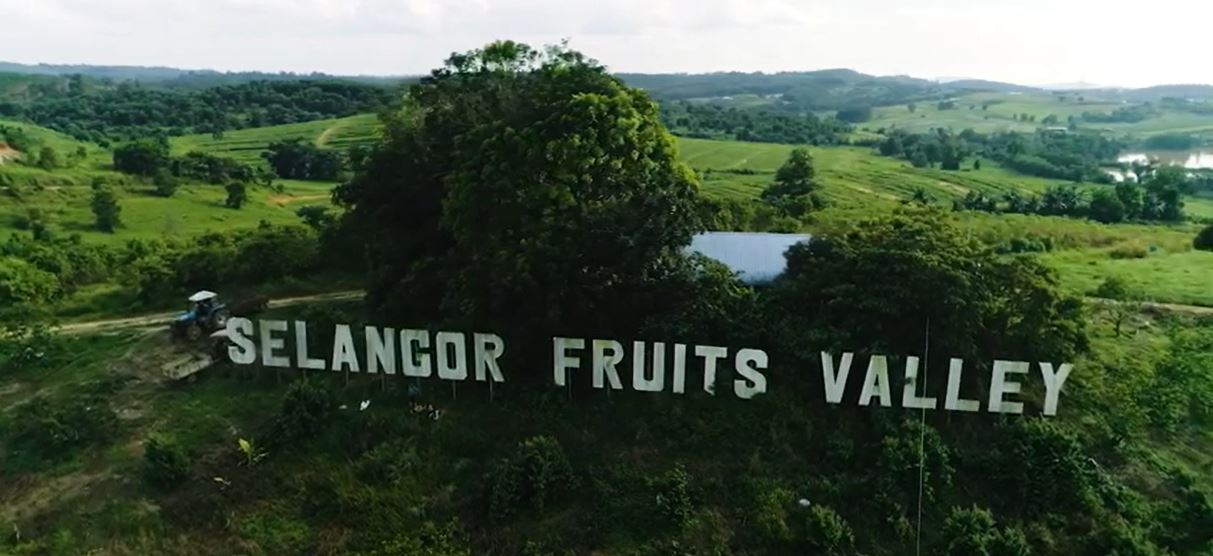
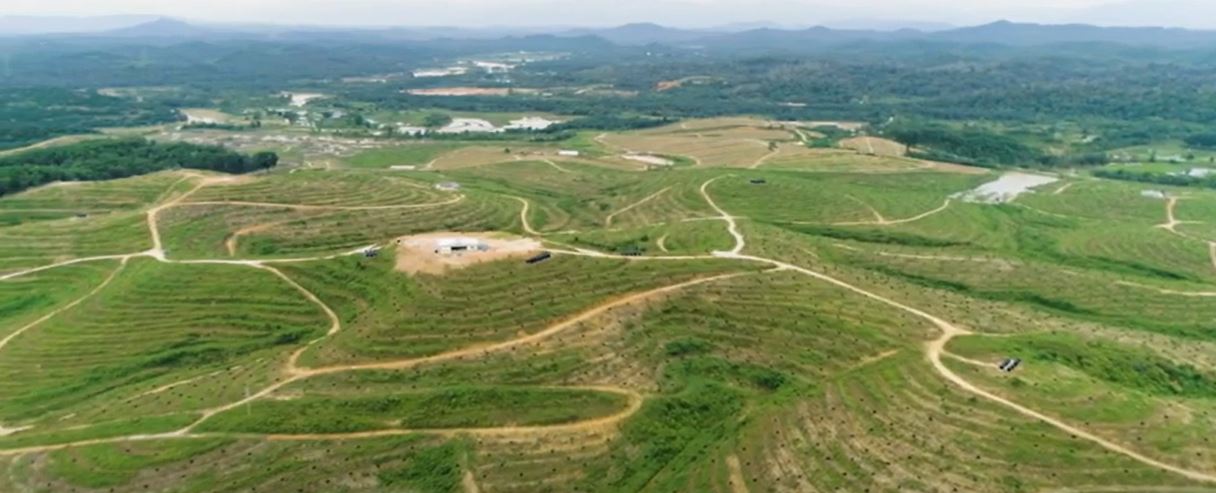
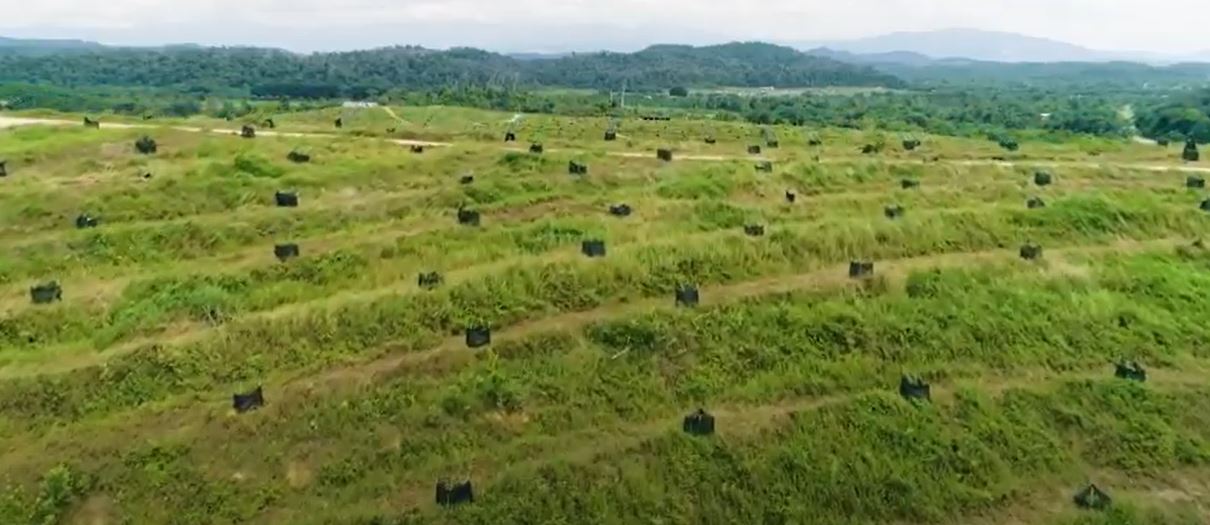
Figure 3. MIE Agro Farm Sdn Bhd’s Durian Plantation in Selangor State of Malaysia (A-Farm Agrotech, 2020)
Durian, the “King of Fruits” in Malaysia, is well-known for its creamy texture and unique, sweet flavor all around the world, especially in South-Eastern Asia (Figure 4). In fact, durian is listed as one of the premium fruits in the Malaysian National Agro-food Policy 2011-2020, because the investment in durian farming brings attractive returns. Therefore, it is recognized as a new agricultural wealth breakthrough for Malaysia. (Suntharalingam et al, 2018). By 2030, Malaysia’s national durian production is anticipated to reach 443,000 tons, according to the Ministry of Agriculture and Food Industries, and China is one of its biggest buyers (DHL Insights, 2020). In 2019 alone, China bought 7,700 tons of durian from Malaysia, which is worth USD 67 million (South China Morning Post, 2020).
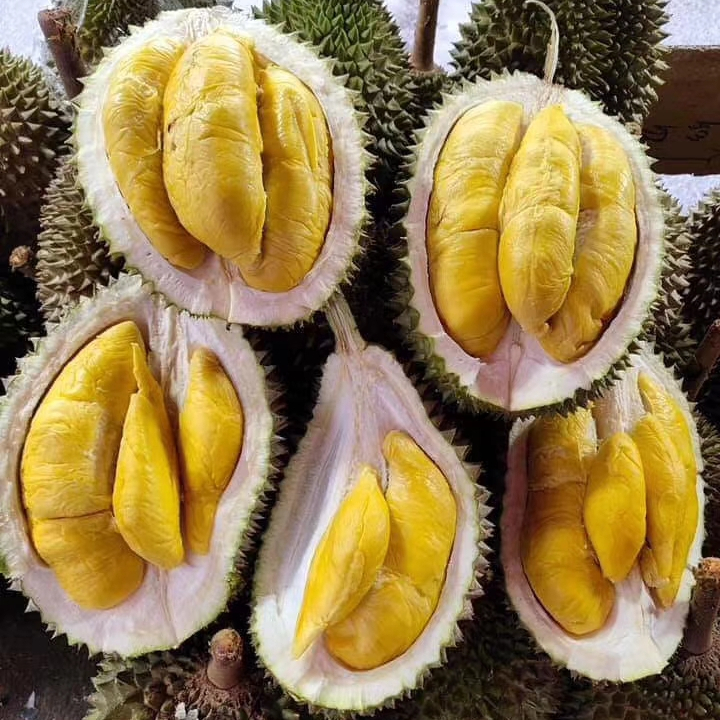
Figure 4. Musang King Durian from Malaysia (Alibaba, n.d.)
Nevertheless, Malaysian laborers expressed that large-scale durian farming is complicated and difficult. There are many challenges that farmers and farming corporations, like the Agro Farm, need to tackle if they want to have a more stable pattern of durian harvest in the long run, and to gain higher profits. Primarily, 3 biggest concerns have been shared by them:
- Expensive Manual Labor: Daily and weekly farming practice in the durian plantation requires a huge amount of farmers to take care of durian trees for successful cultivation, that is directly linked to premium quality, high yields, and best tastes. Farmers need to handle all the cultivation procedures manually, including inspection, irrigation, fertilization, disinsection. These practices all require trained laborers, which involves a large amount of additional labor costs.
- High Sensitivity to Temperature and Other Environmental Conditions: Since durian is a tropical fruit, it needs a hot environment of 24-32°C with 75-80% humidity, and the surrounding temperature should not fall below 22°C. Otherwise, the fruit will not grow. (Agricultural Holdings International, n.d.). To irrigate the furian plantation every day, farm managers have to check rainfall volume and soil moisture level on a regular basis. Meanwhile, they need to be aware of upcoming rainy days by constantly following the changing weather forecasts. Any inaccuracy in these practices is likely to result in wilted durians, or other disastrous consequences.
- No Standardized Instructions: Unfortunately, SOP is not well defined in the durian farming industry, which is why durian farmers and practitioners are dependent on one another for peer learning and knowledge transfers. Since there are no unified benchmarks on different needs of durians at each growing stage, the farmers find it extremely challenging to manage the plantation at optimal level, and the yields are low for unpredictable conditions of durian.
While reading through the 3 concerns, you must have felt the urge to say: precision agriculture! Yes, you got that right: precision farming enabled by IoT can solve their nightmares. This is why, the Agro Farm was researching, experimenting, and looking for IIoT technology partners, for which Seeed was their best shot.
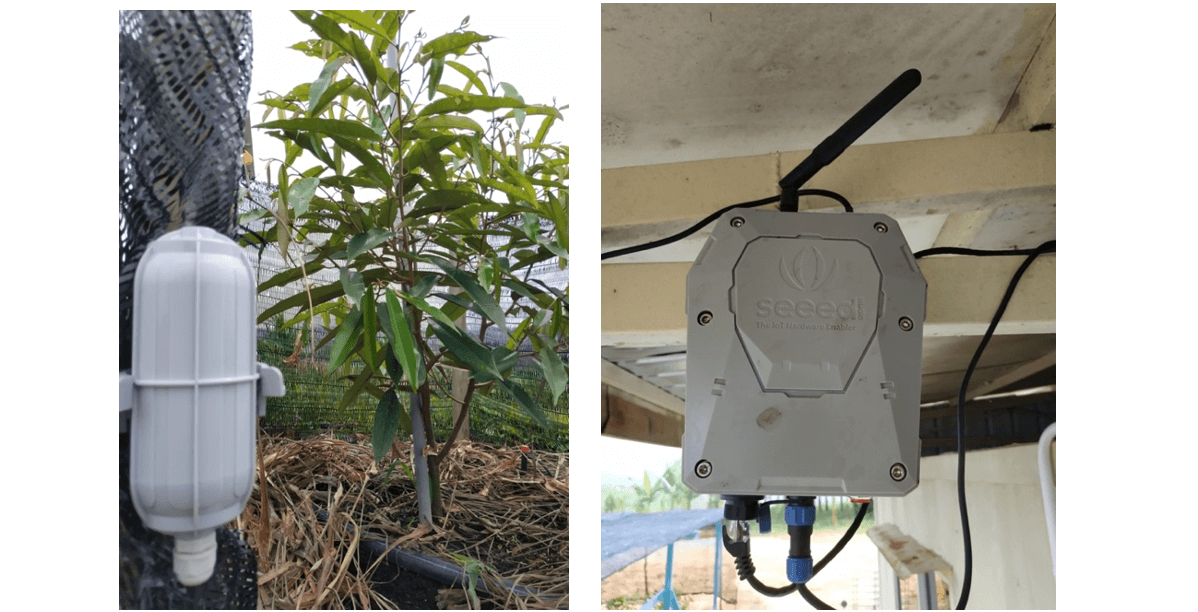
Figure 5. SenseCAP Sensors and Gateway Deployed in Selangor Fruits Valley, Malaysia
The Agro Farm’s IoT team spearheaded by Dr. Pui Boon Hean deployed 20+ SenseCAP LoRaWAN gateways and sensors, with a purpose to measure and monitor levels of soil moisture and temperature, air temperature and humidity, barometric pressure, light intensity, and CO2 (Figure 5 above). The IoT team first set up all the sensors at different places of the durian plantation, and the sensors are responsible for collecting environmental data. Then, the collected data is transferred to the SenseCAP Cloud Server through gateways, in which the transferred data will be stored and integrated. Afterwards, the integrated data will be exhibited on a data platform on the farmers’ smartphones, for them to check all the necessary environmental conditions real-time (Figures 6 & 7).
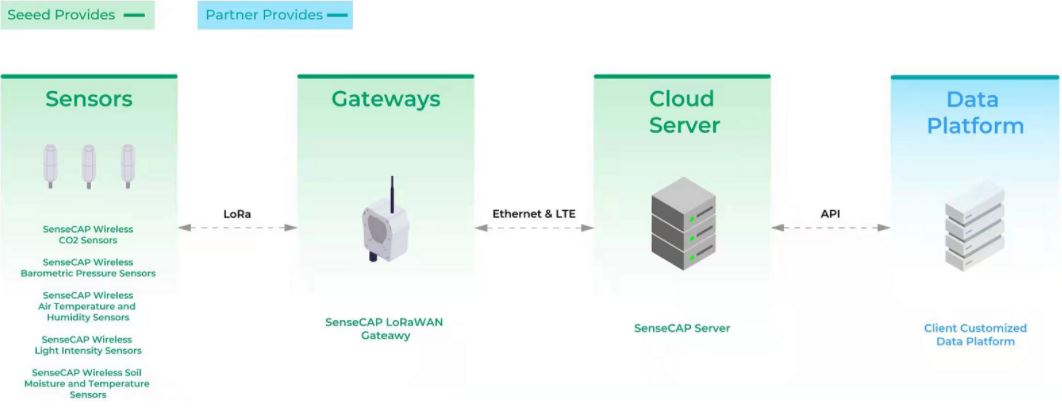
Figure 6. System Deployment Diagram of Smart Durian Farming Project
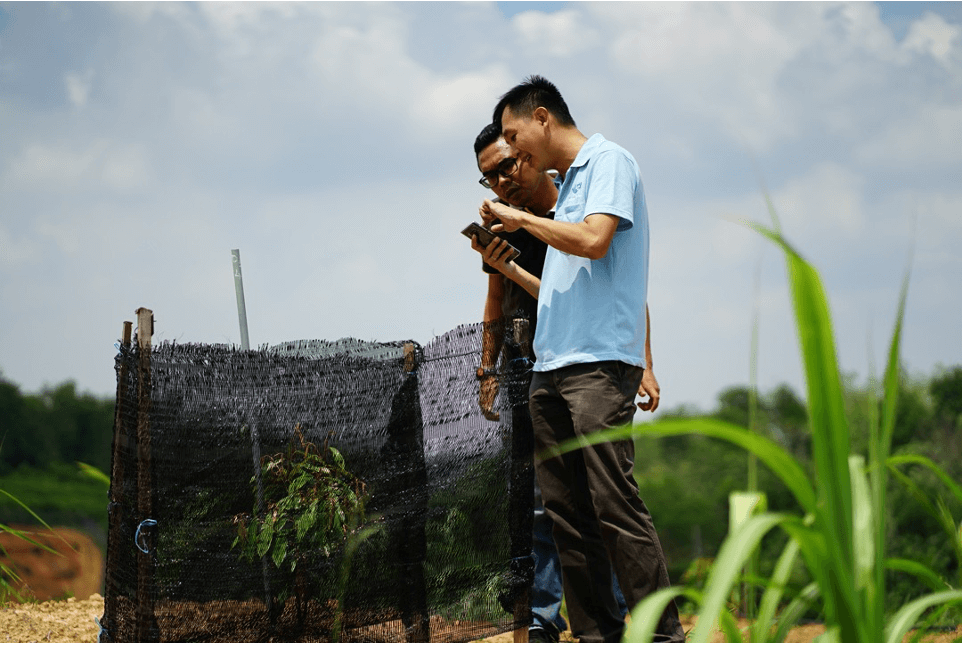
Figure 7. Environmental Data Evaluation on Portable Devices of MIE Agro Farm Sdn Bhd’s IoT Team
For those of you who are not yet familiar with Seeed’s products, SenseCAP LoRaWAN devices are industrial-grade IIoT devices, that are outwardly stylish, and inwardly excellent in stably gathering data with high accuracy. Nestled in an IP66 enclosure, they are robust enough to survive in different weather conditions with 3-8 years of battery lifespan. This makes the SenseCAP series handy to use in various outdoor scenarios, thanks to its low-power, long-distance (coverage of 2km including obstacles!), and low-latency features. The SenseCAP devices used for this Smart Durian Farming Project are as follows:
- SenseCAP Outdoor Gateway – LoRaWAN
- SenseCAP Wireless Soil Moisture & Temperature Sensor – LoRaWAN
- SenseCAP Wireless Air Temperature and Humidity Sensor – LoRaWAN
- SenseCAP Wireless Barometric Pressure Sensor – LoRaWAN
- SenseCAP Wireless Light Intensity Sensor – LoRaWAN
- SenseCAP Wireless CO2 Sensor – LoRaWAN
As a result of this Project, laborers and farm managers have witnessed a drastic decline in time and natural resources in managing the durian plantation, but to mention the replacement of manual labor of 2-hour-long in-person inspection of the field on a daily basis. Therefore, the durians became value-added commodities. After the deployment of the SenseCAP series, the Agro Farm significantly decreased the demand for external laborers, and managed to reduce operating costs. Therefore, the farmers and farm managers can channel their energy on other aspects, like plant health inspection. Furthermore, some of the team members of the IoT team of the Agro Farm have taken initiatives to create benchmarks of durian farming for future reference. Last but not least, SenseCAP LoRaWAN devices were combined with the deployment of a compact weather station, which not only monitors irrigation periods, but also predicts the probability of diseases and pests with the use of chronological data (Figure 8).
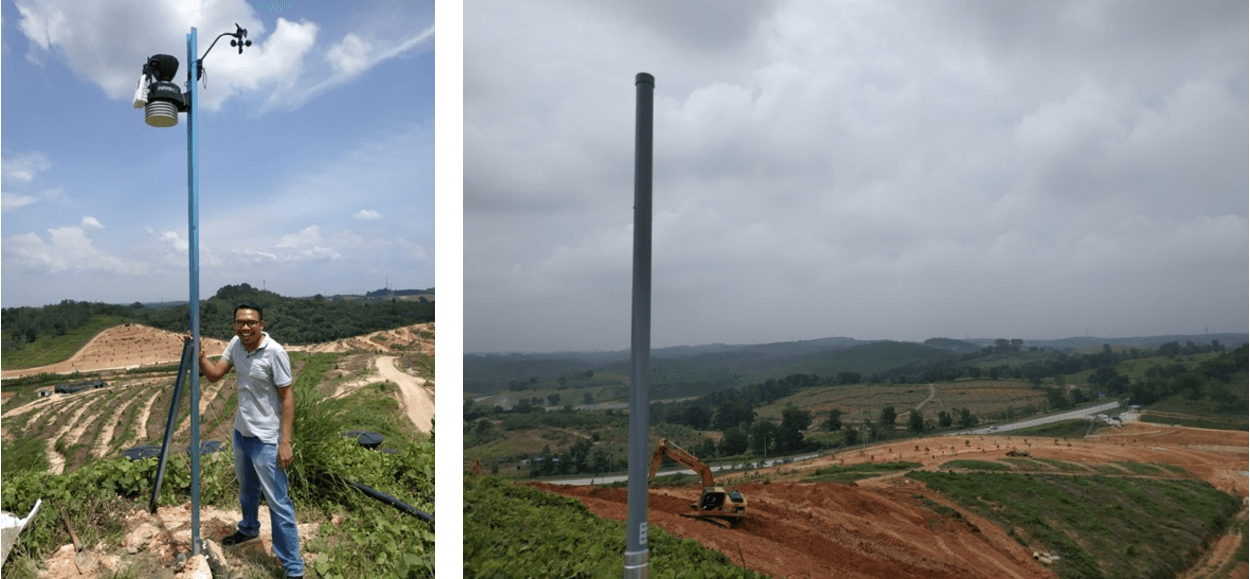
Figure 8. Deployed Weather Stations at the Durian Plantation
Which SDGs Are Relevant?
Today’s Durian Farming Project sheds light on how IoT can enable digital up-scaling of sensitive tropical crops. In this way, tropical fruits are still able to be cultivated for us to consume, surviving the unfavorable climatic transformation. To examine the Project from sustainability perspective, it is helpful to take a look at the UN’s SDGs directly or indirectly influenced by the Project (Figure 9):
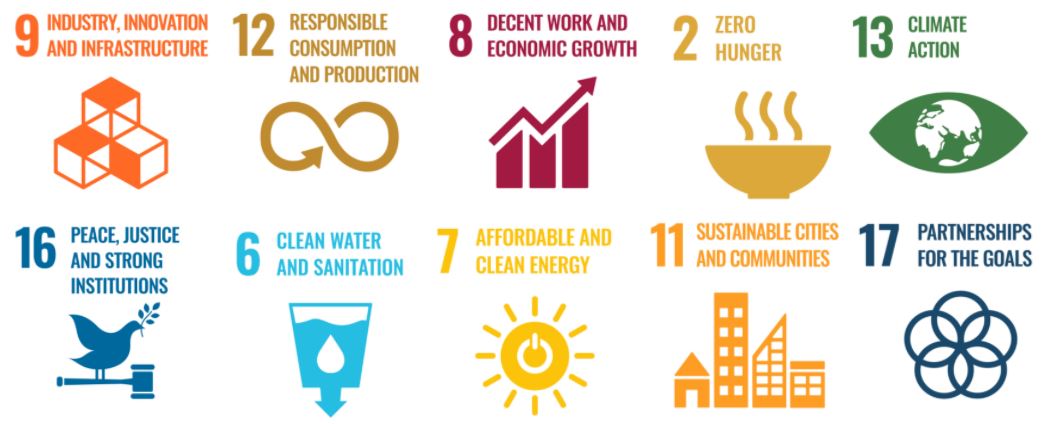
Figure 9. SDGs Supported by OPEN Global IoT Education Project (UN, 2016)
As vague as the SDGs may look, we need to look at each SDG’s Targets, which contain more detailed goals, purpose, and scopes:
- Foster inclusive and sustainable industrialization through deploying ecologically-sound technologies for resource-efficiency and value-added commodities (Targets 9.2, 9.4, 9.5, 9.B, 12.2 & 8.4)
- Promote sustainable production by curtailing global food losses and wastes after the harvest, and by adopting preventative measure against climate change (Targets 12.1, 12.2, 12.3, 12.5, 12.A & 2.4)
- Reinforce adaptive capacity and resilience in regions affected by climate-related disasters, through educating and raising awareness of climate impact mitigation (Targets 13.1 & 13.3)
- Accomplish higher economic and agricultural productivity levels by innovation and technological up-scaling on labor-intensive sectors (Targets 8.2 & 2.3)
- Establish transparent and effective institutions (Target 16.6)
- Greatly augment water-efficiency and energy-efficiency (Targets 6.4 & 7.3)
- Foster positive socio-economic bonds among urban, peri-urban, and rural areas (Target 11.A)
- Enhance South-South and regional cooperation to make innovative, scientific, and technological knowledge accessible for capacity building, including ecologically-sound technologies (Targets 17.6, 17.7, 17.8 & 17.9)
- Promote multi-stakeholder partnerships (Targets 17.16 & 17.17)
In retrospect, achieving full agricultural sustainability will require us to win the heads and hearts of industry players, government agencies, academia, and civil society organizations to holistically plan, implement, and evaluate the projects at hand together. Only with multiple perspectives, can we achieve our digital transformation goals. Through realizing projects like Smart Durian Farming, we are approaching our goals day by day, little-by-little. Everyday counts, and everyone’s input counts. We continue to learn, internalize, and innovate. Together, we make the future. Together, we bring the future alive.
About Author
Ye Seong SHIN
Sustainability and CSR Manager at Seeed Studio
。
Jointly organize/participate in multi-stakeholder projects/platforms/events/webinars/workshops/hackathons/etc. to accelerate SDGs with local communities and open tech anywhere in the world by connecting with Ye Seong SHIN today on LinkedIn.
。
Seeed Studio is the IoT and AI solution provider for all types of traditional industries’ sustainable digitalization. Since its establishment in 2008, Seeed Studio’s technological products and customization services are used for smart agriculture, smart cities, smart environmental monitoring, smart animal farming, smart aquaculture, meteorological monitoring, STEAM education, and all types of emerging scenarios enabled by the Industry 4.0. With the company’s mission to “Empower Everyone to Achieve Their Digital Transformation Goals” (which shares similar values with SDGs’ Motto of “Leave No One Behind”), Seeed Studio is devoted to using open source technologies for accelerating SDGs with multi-stakeholders from UN agencies, academia, companies, CSOs, governments, public/private organizations, and so on. This is why, Seeed Studio also founded “Chaihuo Maker Space”, and started China’s first Maker Movement by annually organizing “Maker Faire Shenzhen”.